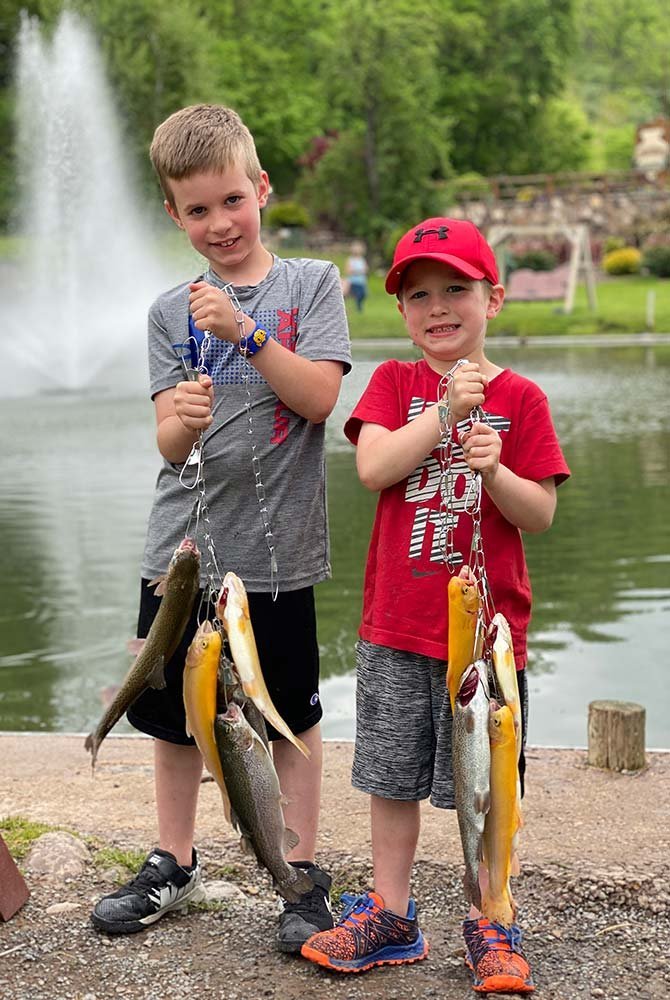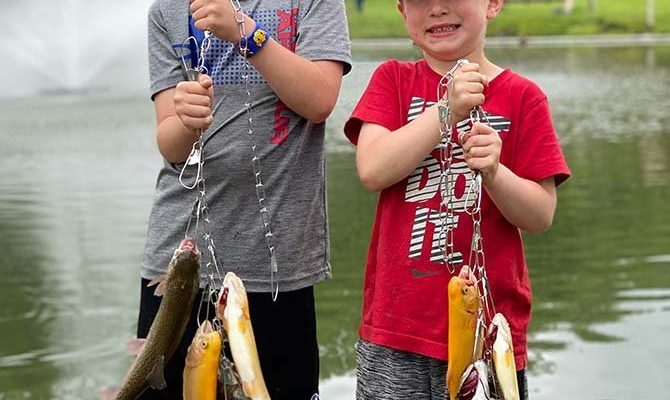
Think of your pond as a neighborhood. There are different types of fish, just like there are different kinds of people. Some get along well, while others might cause trouble. Just as in any community, compatibility is key. Trout, for instance, have specific needs and behaviors that might not mesh well with other fish. Let’s take a closer look at the factors to consider when introducing trout into your pond ecosystem.
Understanding Trout Behavior
Trout are fascinating creatures. They thrive in cool, oxygen-rich water and are known for their active feeding habits. Think of them as the sporty kids in the neighborhood, always on the move. They often chase after smaller fish, insects, and invertebrates, which is part of their natural hunting instinct.
You might be wondering how that affects their compatibility with other fish. Here’s the thing: if you introduce smaller pond fish, such as goldfish or young catfish, trout could see them as snacks! This hunting behavior can lead to stress or even fatal consequences for the smaller fish.
In addition to their hunting skills, trout are sensitive to water conditions. They prefer a specific pH level, temperature, and dissolved oxygen. This means that if the water isn’t just right, they might struggle to thrive, which can impact any other fish in the pond too.
Choosing Compatible Fish
So, what fish can get along with trout? Compatibility really depends on the species you choose. Larger fish with similar water requirements are a safer bet. Here are some options:
- Catfish: Larger catfish species can coexist with trout. They often stick to the bottom of the pond, avoiding direct competition for food.
- Bluegill: These panfish are great companions. They thrive in similar conditions and can manage to dodge the trout while still enjoying the same habitat.
- Carp: While they won’t interact much with the trout, carp can help maintain a balanced ecosystem by feeding on algae and debris.
When considering compatibility, think about space as well. Just like crowded neighborhoods can lead to conflict, a crowded pond can create stress for fish. Ensure there’s enough room for both trout and their companions to thrive.
Water Quality and Temperature Considerations
Trout prefer a water temperature between 50°F to 65°F. If the water gets too warm, they can become stressed, leading to potential health issues. Many other fish species can tolerate a wider range of temperatures, which could lead to complications.
Maintaining clean, well-oxygenated water is essential for trout. If you’re mixing fish, you’ll want to ensure that the overall water quality meets the needs of all species. Monitor these factors closely:
- pH levels: Trout thrive in slightly acidic to neutral pH (6.5 – 7.5). Ensure other species also prefer these conditions.
- Dissolved oxygen: Trout require high levels of oxygen. Aeration may be necessary if you have a mix of fish that produce more waste.
- Temperature: Keep track of seasonal changes that might affect water temperature.
Neglecting these aspects can lead to a stressful environment for your trout and any other inhabitants of your pond.
Feeding Considerations
Feeding is another critical aspect to think about when keeping trout with other pond fish. Trout are aggressive feeders, often competing for food. If you’re feeding them pellets, make sure they don’t monopolize the meal. Here are a few tips:
1. Use sinking pellets: These can help ensure that bottom-dwelling fish also get their share of food, reducing competition.
2. Feed at different times: If you have multiple species, stagger feeding times to give everyone a chance to eat without competing.
3. Monitor the feeding habits: Watch how your fish interact during feeding. If trout are dominating, you might need to adjust your strategy.
This way, you can create a more harmonious feeding environment in your pond.
Signs of Stress or Conflict
Even if you think everything is perfect in your pond, it pays to be vigilant. Stress can sneak up on fish, affecting their overall health and behavior. Here’s what to look out for:
- Chasing or aggression: If you notice trout constantly chasing other fish, it may indicate stress or territorial behavior.
- Hiding: If smaller fish are hiding excessively, they may feel threatened.
- Change in eating habits: A drop in appetite can signal stress in any fish species.
If you spot any of these signs, it may be time to reevaluate your pond setup and consider separating the trout from the rest.
Alternatives to Mixing Trout with Other Fish
If you’re still unsure about keeping trout with other pond fish, you could consider alternative setups. Here are a couple of ideas:
1. Separate Ponds: If space allows, creating a separate pond for trout can provide them with the ideal environment without the risk of conflict.
2. Stocking Different Heights: If you want a mixed pond, consider stocking fish at different water levels. Trout typically occupy the upper layers, while bottom-feeders like catfish can thrive lower down.
By evaluating your options carefully, you can create a balanced ecosystem without compromising the health of any species.
Final Thoughts on Keeping Trout with Other Pond Fish
In conclusion, keeping trout with other pond fish can be a rewarding experience, but it’s essential to choose wisely. Understanding the unique behaviors and needs of trout can help ensure they’ll coexist with companions in your pond. By considering compatibility, monitoring water quality, and keeping an eye on stress signs, you can create a thriving ecosystem.
You’re not just setting up a pond; you’re crafting a vibrant community. Remember, it’s all about balance and care. Happy fishing!

